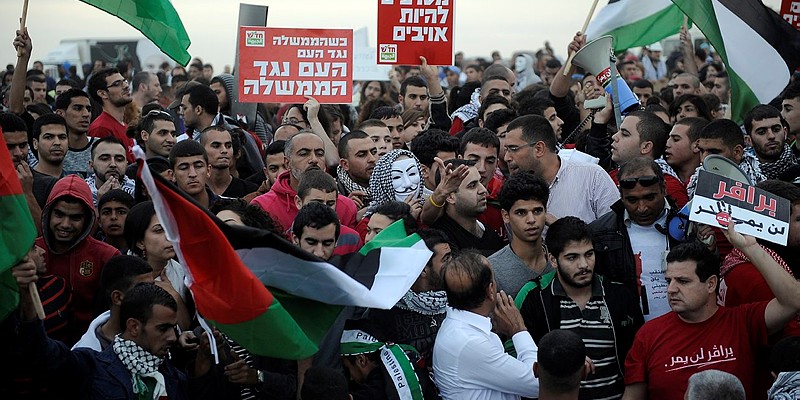On the last Saturday of November 2013, thousands participated in an International Day of Rage against the Prawer-Begin Plan, which aims to solve the conflict regarding the Bedouin community of the Negev in southern Israel.
The demonstrations, many of them violent, took place in largely Arab-populated areas, including Haifa, Jerusalem, the northern Triangle, Ramallah, Hebron and a number of European cities. Anti-Israel activists stirred up the crowds by calling for a third Intifada and a Bedouin uprising.
“Attempts by a loud and violent minority to deny a better future to a large and broad population are grave. We will continue to advance the law for a better future for all residents of the Negev,” Israeli Prime Minister Benjamin Netanyahu declared.
The Bedouin situation in the Negev is highly complex, and, as explained on the Ministry of Foreign Affairs (MFA) website, the state recently “created a comprehensive policy aimed at improving their economic, social and living conditions, as well as resolving long-standing land issues.”
Known as the Prawer-Begin Plan, the policy is based on the Prawer Commission, which included recommendations by Ehud Prawer of the Prime Minister’s Office, taking into consideration a report by an official committee headed by former Supreme Court Justice Eliezer Goldberg. The sum allocated to the plan, named for former Knesset Minister Binyamin Begin, who played a key role in its update, is $2.2 billion.
An estimated 300,000 Bedouin live in Israel, with the majority of approximately 210,000 in southern Israel, or the Negev. Among the Negev Bedouin, 120,000 reside in planned and regulated settlements, and 60,000 are in “non-regulated communities and encampments that will be legalized and developed,” according to MFA. “They will be offered agricultural, communal, suburban and urban living options, all with property rights.”
The MFA site posted a YouTube video featuring two Bedouin leaders from the Negev who support the Begin Plan.
“They want to make a village that will suit the lives of the Bedouin. We all agree,” affirmed Sheikh Awde A-Zanoun. “The state wants to put an end to poverty among the Bedouin and wants the Bedouin to live in dignity. We don’t have another state. This is our state.”
Sheikh I’d Abu Rashed expressed “respect for Begin,” adding that the former minister had “worked with a clear conscience…and listened to Bedouin demands.”
Referring to protestors, Zanoun stated: “Outside interference is only harmful.” The anti-Israel activists demonstrating against the plan “live at the other end of the world.”
Israel’s official position is that the Bedouin should preserve their culture and heritage while enjoying improved access to basic infrastructures, health centers education services and employment opportunities.
A complication is explained in a feature on Jewishpress.com by Dr. Mordechai Kedar, a renowned expert on Israeli Arabs. His main point is summarized in the title, “The Bedouin Problem Is Not Land But Polygamy.”
Polygamy is illegal in Israel but a way of life for the Bedouin, and this profound cultural difference creates serious economic challenges for the state. As noted in the article, “The 5,829 Bedouin women listed as eligible for single mother benefits in the Negev, raising 23,855 children, are actually silent polygamous wives.”
Thousands of Bedouin land claims over past decades were determined to be baseless, a recent, in-depth article by Emily Amrousi in Israel Hayom pointed out. The story quoted Meir Deutsch of Regavim, a non-governmental organization monitoring illegal use of state lands.
“An aerial photograph taken in 1990 by Survey of Israel, the government’s official mapping body, shows a tiny cluster of tents,” Deutsch explained. “A photo shot in 1945 shows a sliver of tilled land. We are not claiming that the Bedouin weren’t in the Negev. But there were no villages. A village is a fixed point on a map with houses and a mosque. None of the 45 points which the Bedouin are demanding today was a village.”
Regavim last year launched an Emergency Campaign to Save the Negev from Bedouin land theft.
“According to the Central Bureau of Statistics, the Bedouin of the Negev are at the bottom of the socio-economic totem pole,” Amrousi wrote. “But the houses that I saw – some of them three-story edifices made of stone and marble – make a mockery of this claim.”
Author: United with Israel staff
Date: Dec. 9, 2013
